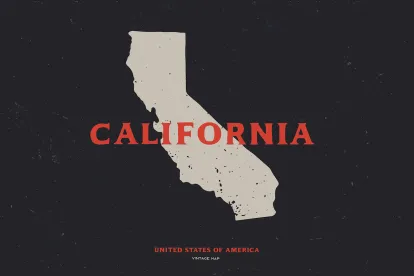It has been three months since California approved the Division of Occupational Safety and Health’s (“Cal OSHA”) COVID-19 Emergency Temporary Standard (“ETS”). The rushed implementation of Cal OSHA’s ETS, which imposed new and confusing obligations on employers, left many scratching their heads and resulted in several legal challenges to the ETS. For example, some agricultural employers challenged the ETS on grounds that it was ambiguous, imposed overwhelming compliance obligations on employers, and did not consider costs or feasibility. Other employers continued to raise concerns over requirements in the ETS in public forums, through written questions to Cal OSHA, and directly with their representatives.
Cal OSHA responded to the concerns raised by employers and business associations by publishing a series of online FAQs at the beginning of January 2021. Following the initial series of FAQs, and largely in response to more employer questions, Cal OSHA quietly updated and revised the FAQs on January 26, 2021, and February 26, 2021. In its most recent rounds of FAQ updates, Cal OSHA has added new guidance on testing and the ETS’s scope of coverage.
Testing
A main area of confusion for employers since the ETS was adopted has been around the requirements for COVID-19 testing. This is because Cal OSHA’s ETS uses inconsistent language to discuss requirements (e.g., “offer” vs. “provide” in the context of required testing). The ETS also explicitly conveys that “all employees in the exposed workplace shall be tested and then tested again one week later,” raising questions as to whether an employer must require employees to undergo testing or exclude them from the workplace if testing is refused when required. Employers also struggled with understanding how testing should be provided to employees (e.g., on-site testing using a third party or requiring employees to get tested by a health plan provider). From the original FAQ, it is clear Cal OSHA views the testing provisions as requiring an employer to inform its employees on how they can obtain COVID-19 testing at no cost and during working hours or paid time when testing is required (i.e., following a work-related exposure if working in an exposed workplace during a minor or major outbreak). The original FAQ confirmed that employers had these same notification and testing obligations whenever testing is required under the ETS. But the FAQ largely did not explain how the employer could arrange for this testing beyond simply stating that employers were free to use state or local testing services, arrange testing with a third party, or use health plan provider testing options.
Recent updates to the FAQ clarify that employers have two primary options: the employer can (1) partner with a medical provider to establish a testing program; or (2) use the free testing services provided by the state or county health department. To locate county testing facilities, the employer should check the local county or city health department’s website. To locate the correct website, employers may visit the California Department of Public Health or the National Association of County and City Health Officials website, and click on the applicable county or city health department. Although not mentioned in the updated FAQs, the state also maintains a website on COVID-19 testing locations that employers can use to find testing locations. Cal OSHA’s FAQ updates also convey that employers who need to test a large number of employees on a regular basis can partner with the State of California Valencia Branch Laboratory (“VBL”) to set up on-site testing of employees.
While the updates signal to employers that they may use many different resources to satisfy testing obligations under the ETS, the updates fail to address some of the practical and feasibility challenges that employers are facing. Cal OSHA’s FAQs, in particular, fail to address whether employees that refuse to undergo testing when required or directed under the ETS need to be excluded from the workplace. Instead, Cal OSHA states only that employees may refuse and do not need to sign a declination form. The FAQs are similarly silent on how an employer can effectively manage some of the costs related to testing, such as travel costs, testing time, and out-of-pocket expenses. This can be especially difficult for employers that have employees working in remote areas where there are limited testing locations, such that the use of available testing centers to achieve testing is impracticable or can result in substantial costs in paid time or travel expenses. Further, while Cal OSHA’s FAQs make a determination that employers can arrange for testing with a third-party medical provider, Cal OSHA’s FAQs and guidance do not even attempt to advise employers on where to start in setting up a workplace testing plan. As a result, employers lack clear direction on how to arrange for workplace testing in a way that will satisfy Cal OSHA’s requirements under the ETS and be consistent with workplace testing considerations from the Centers for Disease Control and Prevention (“CDC”). This, in turn, leads to more questions on the employer’s obligations for management of testing records, selection of COVID-19 tests to be used in their workplace testing plan, and coordination of testing with employees.
Scope of Coverage
Cal OSHA’s ETS applies broadly to California workplaces and has only a few limited exceptions. Cal OSHA’s ETS, for instance, does not apply to employees when covered by the Aerosol Transmissible Diseases (“ATD”) standard. In attempting to clarify the scope of this exception, Cal OSHA’s original FAQs conveyed that an employee in a single workplace could not be subject to both the ETS and ATD standards at the same time. This exception is critically important for employers in the healthcare space, as well as emergency responders, as these employees often have ongoing occupational exposures to COVID-19, such that compliance with the ETS would be untenable. In addition, these employees are protected against COVID-19 exposures in the workplace through the ATD’s strict preventive measures and mandatory use of personal protective equipment.
To illuminate the exception further, Cal OSHA’s updated FAQ confirms that emergency responders that are protected by the ATD standard are exempt from the ETS. This is shown by Cal OSHA’s example that firefighters cannot be subject to both the ETS and ATD standards at the same time. Simply put, the firefighter must be protected from COVID-19 under one of the standards, but not by both. If the employer’s ATD Prevention Plan does not identify the firefighter as having occupational exposure to aerosol transmissible diseases, or if the firefighter is not protected under that plan, the ETS will apply. Employers in healthcare and emergency response will therefore need to carefully evaluate COVID-19 exposures in their workplaces and operations, and ensure that employees are protected by the preventive measures under either the ETS or ATD standard. Under this guidance, however, an employer cannot take the position that its entire workplace or operations are exempt from the ETS if only some of its employees are covered by the ATD standard. Employers in healthcare and emergency response may therefore need to comply with both the ATD and ETS in different areas of their operations.
Given the expedited roll-out of Cal OSHA’s ETS and the ongoing litigation surrounding the ETS, the agency will likely continue issuing new FAQs and guidance to employers.






 />i
/>i
